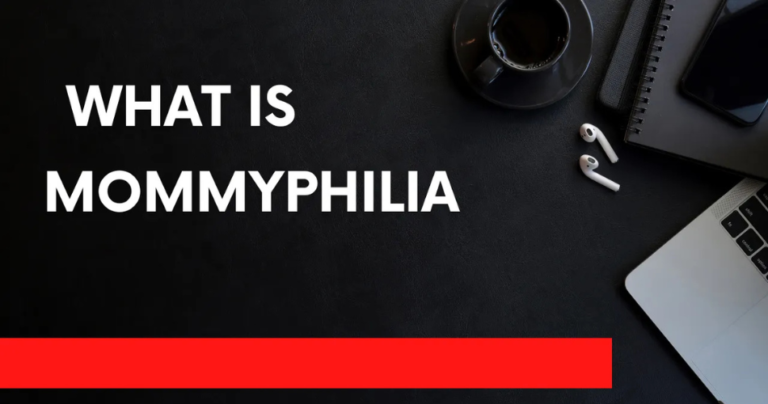Understanding Fincore Digital Marketing: Revolutionizing Financial Services
As the landscape of business continually evolves, financial institutions are increasingly embracing automated marketing techniques to stay competitive and effectively engage with their target audience. Fincore specializes in digital marketing solutions tailored specifically for the financial services sector, aiming to enhance traditional marketing methods by leveraging cutting-edge technology.
In this article, we will explore the core components of Fincore digital marketing, its benefits, and how it is transforming customer relationships within financial firms.
What is Fincore Digital Marketing?

Fincore digital marketing is a specialized branch of digital marketing focused on the financial services industry, encompassing banks, insurance providers, investment firms, and innovative fintech startups. This approach merges traditional marketing principles with modern digital tools to create customer-centric marketing strategies that rely on analytics and data.
Regulatory compliance is a crucial element in Fincore digital marketing, as financial services demand heightened trust and transparency. Fincore emphasizes branding strategies that cultivate credibility and reliability, employing versatile tactics such as social media, search engine optimization (SEO), email campaigns, and content marketing, making them particularly well-suited for the finance sector.
Key Strategies in Fincore Digital Marketing
Here are the fundamental strategies that form the backbone of Fincore digital marketing, enabling financial institutions to attract new customers, retain existing clients, and enhance their online presence.
1. Content Marketing
Content marketing plays a pivotal role in Fincore digital marketing. Trust is paramount in retail financial services, and it can be built through effective education. With numerous topics to address—such as investments, loans, personal banking, and insurance—financial institutions can position themselves as industry authorities.
Examples of content marketing include:
- Informative articles, news updates, and blogs that offer insights or promote specific services.
- Comprehensive business reports, white papers, e-books, and guides that explore complex financial concepts.
- Engaging videos and infographics that simplify products or services for better public understanding.
2. Search Engine Optimization (SEO)

SEO is vital for enhancing the visibility of financial services in search engine results. A robust SEO strategy allows institutions to rank higher for relevant keywords such as “best mortgage rates” or “investment strategies.” Key aspects of Fincore’s SEO approach include:
- Targeting niche-specific keywords.
- Optimizing local search results for institutions with physical locations.
- Enhancing website user experience (UX) to ensure mobile compatibility and security.
- Developing content that answers common financial inquiries.
3. Social Media Marketing
Social media platforms like LinkedIn, Facebook, Twitter, and Instagram provide a valuable channel for financial institutions to connect with customers. Social media marketing can showcase products, share customer success stories, and distribute educational materials. Additionally, social media serves as an effective customer service tool, fostering quicker reponses and increasing overall customer satisfaction and loyalty.
4. Email Marketing
When executed effectively, it can nurture leads and inform clients about available services or new features. Fincore email marketing provides several advantages:
- Engagement through targeted, interest-based messages, which enhance open and click-through rates.
- For example, a bank may follow up with individuals who expressed interest in investment opportunities, offering tailored advice on financial planning.
5. Pay-Per-Click (PPC) Advertising
PPC advertising is a cost-effective method for driving traffic to a financial institution’s website. By bidding on financial-related keywords and targeting specific consumer demographics, institutions can attract potential clients. Platforms like Google Ads, Facebook Ads, and LinkedIn Ads are ideal for running campaigns aimed at marketing products and raising awareness.
One of the standout features of PPC in Fincore digital marketing is its ability to measure performance precisely, allowing for flexible campaign management and effective targeting of audiences actively seeking financial services.
Personalization and Data-Driven Marketing

Personalization is a key element of Fincore digital marketing. Given the diverse needs of customers in the financial sector, delivering personalized experiences is crucial for differentiation in a competitive marketplace. By leveraging customer data and analytics, financial institutions can develop tailored campaigns targeting individuals based on their specific financial goals, behaviors, and preferences.
For instance, a bank could analyze customer data to identify those nearing retirement age and provide personalized messaging about retirement planning services. Similarly, an investment firm can offer customized guidance based on a client’s risk profile and investment history.
Compliance in Fincore Digital Marketing
Ensuring compliance with industry regulations poses significant challenges for digital marketing in the financial sector. Institutions must adhere to strict guidelines set by regulatory bodies, including the SEC, FINRA, and GDPR (for European operations). Marketers in this field must ensure that their campaigns:
- Present clear and accurate information.
- Include appropriate disclaimers regarding financial products.
- Safeguard customer data and privacy.
- Avoid making misleading or unverified claims.
Fintech’s Prospects in Fincore’s Digital Marketing
The rise of fintech has profoundly impacted Fincore digital marketing. Fintech startups introduce innovative services, such as mobile banking apps and digital lending platforms, focusing on customer-centric approaches that challenge traditional financial institutions to modernize their digital marketing strategies.
Many traditional financial entities are adapting to this shift by enhancing their digital presence. They are increasingly leveraging digital marketing channels to optimize user acquisition, utilizing video content, social media engagement, influencer partnerships, and seamless digital experiences.
Measuring Success in Fincore Digital Marketing
Evaluating performance is essential to any digital marketing strategy. In Fincore digital marketing, key performance indicators (KPIs) include:
- Website traffic and engagement metrics (e.g., time spent on site, bounce rates).
- Conversion rates for lead generation and product sign-ups.
- Return on investment (ROI) from PPC campaigns.
- Social media engagement rates and follower growth.
By analyzing these metrics, financial institutions can refine their strategies to better meet customer needs and enhance their digital marketing efforts.
FAQs
1. What is Fincore digital marketing?
Fincore digital marketing specifically targets the financial services sector, including banks, insurance companies, investment firms, and fintech companies. It combines traditional marketing strategies with modern tools to create customer-centric, analytics-based marketing campaigns that enhance trust and transparency in the financial industry.
2. How does content marketing benefit financial institutions?
Content marketing builds trust by educating potential customers on complex financial topics. By providing valuable information through articles, blogs, whitepapers, and videos, financial institutions can position themselves as industry experts and attract more clients.
3. Why is SEO important for financial services?
Search Engine Optimization (SEO) is crucial for improving the visibility of financial services in search results. A strong SEO strategy helps institutions rank higher for relevant keywords, ensuring potential customers can find their services easily.
4. What role does social media play in Fincore digital marketing?
Social media platforms like LinkedIn, Facebook, and Twitter allow financial institutions to engage directly with customers, share informative content, and address queries promptly. This two-way communication fosters trust and loyalty among clients.
5. How does personalization enhance customer experiences in financial services?
Personalization is key in catering to diverse customer needs. By utilizing customer data and analytics, financial institutions can deliver tailored campaigns based on individual financial goals and preferences, leading to a more satisfying customer experience.
6. What are the compliance challenges in Fincore digital marketing?
Financial institutions must comply with various regulations governing customer communication, advertising, and data handling. Marketers need to ensure that their campaigns provide accurate information, protect customer data, and include necessary disclaimers to avoid misleading claims.
7. How do fintech companies influence digital marketing strategies?
Fintech companies emphasize digital marketing channels, utilizing innovative strategies like viral marketing and influencer partnerships. Traditional financial institutions are adapting by digitizing their services and enhancing their digital marketing efforts to remain competitive in the evolving financial landscape.
Conclusion
Fincore digital marketing is revolutionizing how financial institutions connect with their clients, enabling them to thrive in an increasingly competitive landscape. By leveraging strategies like content marketing, SEO, social media engagement, and personalized campaigns, financial services can build trust and transparency with their customers. As fintech innovations reshape the industry, traditional financial institutions must adapt by embracing digital marketing techniques and ensuring compliance with regulations. By measuring success through key performance indicators, financial firms can refine their marketing strategies to better meet customer needs and enhance overall engagement, securing their position in the modern financial ecosystem.
Read More: Aoomaal.blog






